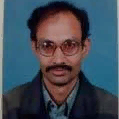
Sudhanshu Maheshwari
Work place: Department of Electronics Engineering, Z. H. College of Engineering and Technology, Aligarh Muslim University, Aligarh, India
E-mail:
Website:
Research Interests: Engineering, Computational Engineering, Computational Science and Engineering
Biography
Sudhanshu Maheshwari served Harcourt Butler Technological Institute, Kanpur (India) for around four years as Lecturer. He joined the Department of Electronics Engineering, Aligarh Muslim University in year 2000 and is currently working as Associate Professor. He has been engaged in teaching and design of courses in the area of Analog Integrated Circuits and Current-mode Circuits. His research areas are analog signal processing circuits and current mode circuits. He has published around 95 research papers which includes 70 International Journal papers since year 2000. He is also the author of four book chapters. He has been the author as well as reviewer for several International journals like IET: Circuits Devices & Systems, Int. J Electronics, Circuits Systems and Signal Processing, Int J Circuit Theory and Applications, Journal of Circuits Systems and Computers, Radio-engineering Journal, Active and Passive Electronic components, J Active and Passive Electronic Devices, Int. J Computer Applications, Microelectronics Journal etc. He is the member of the Editorial Board of International Journal: Active and Passive Electronic Components.
Author Articles
Novel Current-Mode All-Pass Filter with Minimum Component Count
By Jitendra Mohan Bhartendu Chaturvedi Sudhanshu Maheshwari
DOI: https://doi.org/10.5815/ijigsp.2013.12.05, Pub. Date: 8 Oct. 2013
In this paper, two novel first order current-mode all-pass filters are proposed using a resistor and a grounded capacitor along with a multi-output dual-X second-generation current conveyor (MO-DXCCII). There is no element matching restriction. Both the circuits exhibit low input and high output impedance, which is a desirable feature for current-mode circuits. The proposed circuits are simulated using SPICE simulation program to confirm the theory.
[...] Read more.Other Articles
Subscribe to receive issue release notifications and newsletters from MECS Press journals